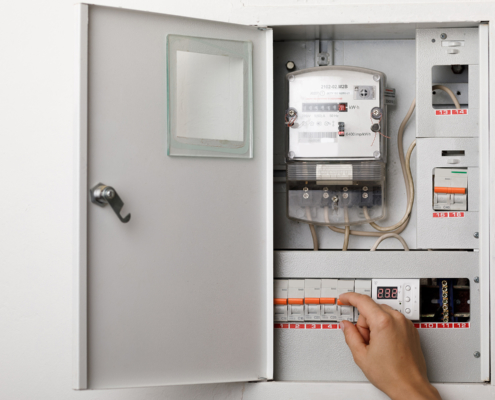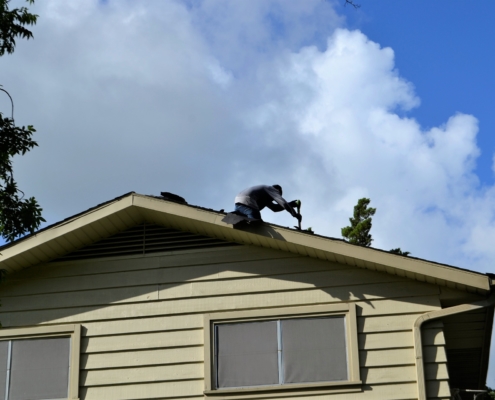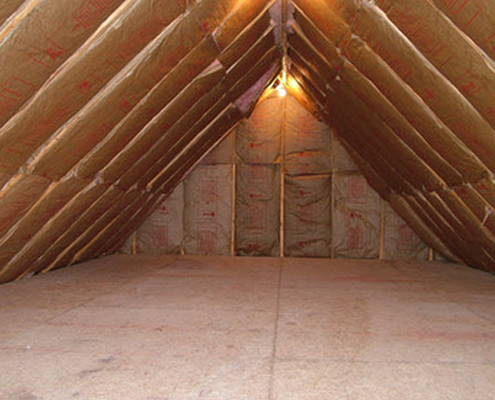MOLD REMEDIATION
Often caused by a burst pipe, flooding or inadequate ventilation, mold grows quickly and can cause headaches — both physical and figural — damaging employees’ health and your structure’s stability if left untreated. Sometimes it can go unnoticed for months or even years, resulting in more costly repairs.
Mold removal services the Way
Signature processes for consistent quality
High-powered equipment and infrared testing to locate damage not visible
Institute of Inspection, Cleaning and Restoration Certification (IICRC) certified crews
Licensed and insured
Highly trained and certified technicians
Professional customer care with seamless, steady communication
Your satisfaction, guaranteed
Mold removal process and details
Mold removal process
When you call, we will schedule a Woodard specialist to inspect your business property. If our specialist finds mold during the inspection, we will rely on the expertise of a third party Industrial Hygienist (IH) to conduct testing and write a remediation protocol.
We will establish containment areas at the start of remediation. This typically involves generating negative air pressure to ensure no spores escape the work area.
Next, we will utilize HEPA air scrubbers within the containment area to capture mold spores, while guarding against cross-contamination.
Using personal protective equipment, a mold team will cut out the contained area or visible signs of mold safely.
We will perform cleanup and water damage repairs as needed and apply an anti-microbial to fully disinfect the area to prevent future mold and microorganism infestation.
During post-testing, an IH will retest for mold. We will then provide a third-party approval letter stating that the job is complete, before removing our equipment.
Hazards of mold
Mold spreads quickly, feeding on a wide variety of organic material, but especially on moisture. Left untreated, it can cause structures to rot or deteriorate, leading to more costly repairs.
Mold — especially black mold (stachybotrys chartarum) — can also impact health. Minor symptoms caused by mold include nasal stuffiness, throat irritation, coughing or wheezing, eye irritation or skin irritation. Allergy or asthma sufferers could experience more severe symptoms including difficult breathing. Left untreated, mold can cause serious illness to employees or patients.
Aspergillus and cladosporium are two other types of mold often found in commercial properties. All three types vary in color, size and shape.
Mold spores occur naturally outdoors and can enter your commercial property through windows and doors, or can be carried in on clothing — even if you keep your property spotless. The key is to prevent the spores from growing into mold and having your property inspected at the first sign of potential mold growth.
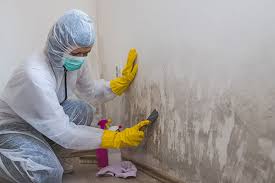
Mold Remediation and Restoration
Mold thrives in a warm and damp environment. This condition can be created in your home due to a variety of reasons such as rain or storm activity, roofing damage or malfunctioning pluming. There are many unwanted health issues associated with mold growth such as:
Allergies
Respiratory problems
Unwanted foul and/ or musty odor
Discoloration of walls and affected areas
Understanding Mold
Some restoration companies advertise “mold removal” and may even guarantee to remove all mold. This is a fallacy because removing all mold from a house or business is impossible; microscopic mold spores exist almost everywhere, both indoors and outdoors.
Here are the facts:
Mold is present almost everywhere, indoors and outdoors.
Mold spores are microscopic and float along in the air and may enter your home through windows, doors, or AC/heating systems or even hitch a ride indoors on your clothing or a pet.
Mold spores thrive on moisture. Mold spores can quickly grow into colonies when exposed to water. These colonies may produce allergens and irritants.
Before mold remediation can begin, any sources of water or moisture must be addressed. Otherwise, the mold may return.
Mold often produces a strong, musty odor and can lead you to possible mold problem areas.
Even higher-than-normal indoor humidity can support mold growth. Keep indoor humidity below 45 percent
The Mold Remediation Process
Every mold damage scenario is different, and requires a unique solution, but the general mold remediation process stays the same. The steps listed below illustrate our “typical” process:
Inspection and Mold Damage Assessment
Mold Containment
Air Filtration
Removing Mold and Mold-Infested Materials
Cleaning Contents and Belongings
Restoration
Common Mold Misconceptions
With sensational news stories and misleading advertising, you can easily understand why so many people are misinformed about indoor mold. Learn the facts about mold and the mold remediation process.
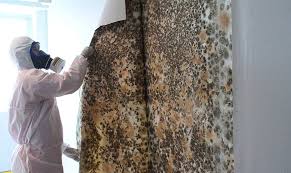
What Is Black Mold?
You may have seen sensational news reports that warn about the dangers of “black mold” or “toxic mold”. These reports can be alarming and confusing so it’s beneficial to get the facts to better understand mold.
Stachybotrys chartarum is the type of mold often called black mold, and it does produce allergens and irritants. However, many types of mold can produce allergens and irritants. Treat any mold with caution – stay out of affected areas and don’t touch or disturb the mold.
How Do I Tell If It’s Black Mold?
Since many types of mold can cause reactions, you should contact us regardless of the color or type of mold. In many instances, multiple types of mold may exist in the same house or structure. If you suspect you have a mold problem
Understanding Mold
When water intrudes into your property, mold growth can start in as little as 48 hours. Consider the following mold facts:
Mold is present almost everywhere, indoors and outdoors.
Mold spores are microscopic, float along in the air, and may enter your home through windows, doors, or AC/heating systems or even hitch a ride indoors on your clothing or a pet.
Mold spores thrive on moisture. Mold spores can quickly grow into colonies when exposed to water. These colonies may produce allergens and irritants.
Before mold remediation can begin, any sources of water or moisture must be addressed. Otherwise the mold may return.
Mold often produces a strong, musty odor, and that odor can lead you to possible mold problem areas.
Even higher-than-normal indoor humidity can support mold growth. Keep indoor humidity below 45 percent
Mold Damage Emergency Tips
residents may not even be aware that mold is growing inside of their home. For some, mold is merely an unsightly and smelly problem. For those who suffer from respiratory conditions or allergies, the problem can be much more severe and be a major health concern. For those with this type of sensitivity, removal of mold is crucial to their general health and well-being
If you have a mold problem in your home or business, consider the following facts:
Significant mold growth can occur in 48-72 hours.
Mold may present a greater risk to children, the elderly, and anyone with respiratory problems.
A strong, musty odor may indicate hidden mold behind drywall or under carpeting.
What to Do:
Stay out of affected areas.
Turn off the HVAC system and fans.
What Not to Do:
Don’t touch or disturb the mold.
Don’t blow air across any surfaces with visible or suspected mold growth.
Don’t attempt to dry the area yourself.
Don’t spray bleach or other disinfectants on the mold.
MOLD REMOVAL
Mold in your home or building can be an unsettling experience. Mold can cause serious indoor air quality issues as well as physical damage to your property. the most effective and cost efficient techniques in remediating all mold issues.
Please consider the following facts:
Mold spores are microscopic and may enter your property in a variety of ways.(windows, doors, HVAC systems, pets, and clothing).
Mold spores thrive on moisture and can grow quickly when provided with a food source (plant based building materials) and exposed to water or moisture.
Before mold remediation begins, any source of water exposure must be addressed.
Higher than normal humidity can also support mold growth
PROCESS
Contact
A knowledgeable representative will gather critical information from you in order for to respond to your individual needs quickly and efficiently.
Inspection and Mold Damage Assessment
A highly trained technician will carefully inspect your property for signs of mold.
Not all mold is visible. Our team will use specialty equipment to identify hidden moisture and potential contamination.
Mold Containment/Air Filtration
Containment barriers are critical to eliminate the spreading of mold spores during remediation.
utilizes advanced containment procedures such as negative air chambers to isolate the contaminated area and negative air pressure to create proper air exchange within the containment barriers.
Specialized equipment with HEPA filtration are utilized to capture microscopic spores out of the air and from surfaces.
Removing Mold and Mold-Infested Materials
technicians use anti-fungal and anti-microbial treatments to eliminate mold colonies and to help prevent new colonies from forming.
Removing and disposing of contaminated porous materials, such as drywall and carpeting, may be necessary to remediate heavy mold growth.
Restoration
reconstruction experts will work closely with you and your insurance provider to restore your property to its pre-mold condition.
